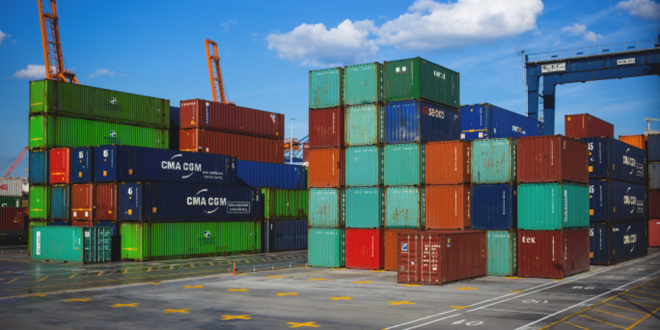 New Zealand is efficient and world leading at producing primary commodities like milk, fruit, timber, fish and so on.
New Zealand is efficient and world leading at producing primary commodities like milk, fruit, timber, fish and so on.
By and large we have developed those industries so we are producing at the top quality end of the quality spectrum. This maximises price and gives us some protection when there is oversupply. But there is very limited value-add associated with commodity production –yes there is a premium for quality but it is limited in size and may be limited in duration. One bad season and the advantage is gone. Commodity prices are also subject to uncontrollable variation.
There are also production limits for commodities which sooner or later limit the scope for growth.
Similar comments apply to the much vaunted tourism sector – yes this is also booming and there are concerns about shortage of accommodation for example, which you would have to see as positive. But tourism is also a low value-add industry. A large proportion of the jobs, eg servicing hotels, working in the retail sector etc, are relatively low wage jobs and there is little that can be done about that. Tourism may give us full employment and growth in an overall sense but not necessarily economic growth per capita.
In fact despite our relatively good economic growth compared with other countries New Zealand is still a relatively low wage economy.
So what should we do about that?
The golden goose here is “value add” – if we can turn our commodities or other resources into products which have more value than the materials they are made from, by adding technology or special skills/knowledge to the mix, then benefits really begin to flow. Value add brings more income to the country without necessarily adding to the work force and is the springboard for increased salaries and wages – which means increased individual prosperity.
For a resource based economy like New Zealand, the nirvana is to have completely integrated industries – including every step from the initial raw material to the finished value add consumer product.
In some areas we are achieving added value:
- An outstanding example is the wine industry. Much of our wine production eg sauvignon blanc, is relatively low in added value, but we also produce higher quality wines which attract top drawer prices.
- In the production of very fine merino wools there are long term connections with clothing manufacture which are highly valuable.
- Even with commodities like milk we are creating extra value where we can. But it is hard work competing against and establishing points of difference against big international players such as Nestle.
- There has been a great deal of emphasis by the government in investing in so-called high value manufacturing which is by is nature value adding. Fisher and Paykel always used to be the standout example but much of its manufacturing has now moved overseas. There are a number of high profile IT firms which are better examples, eg Xero, and of course the fabulous example of Weta Workshops.
But these examples collectively are still small when compared with the income from commodity exports. We are still too reliant on commodity income.
So why is value-add so hard and what should we do to be more successful at it?
It is basically hard because other countries can do it as well. All you need is access to the raw material – the commodity – knowledge of how it is done, and you are in business. Unfortunately overseas value-add producers have a lot of advantages compared with New Zealand. In particular they are larger (have access to a much bigger domestic market) are close to export markets minimising transport costs, often have a much stronger technology base, and probably most importantly are able to operate on a much larger scale reducing operating costs. Lower operating cost particularly has seen much New Zealand manufacturing relocate overseas.
So what can or should we do about that?
 One of the things we should not do is trying and prevent high value business from being bought by overseas investors and/or shifting manufacturing bases to lower cost locations. That’s life and we simply have to adapt to that reality. Resilient sectors need to avoid being so “thin” in numbers of businesses so they cannot readily withstand losses through overseas purchases of ownership or movement of production overseas. Sectors are most at risk if they are clustered around and depend on, one dominant firm. A salient lesson in that regard is (or was) the dependence of Finland on Nokia, once the leading light in mobile phone manufacture. The lesson here is that numbers and diversity matter in giving resilience.
One of the things we should not do is trying and prevent high value business from being bought by overseas investors and/or shifting manufacturing bases to lower cost locations. That’s life and we simply have to adapt to that reality. Resilient sectors need to avoid being so “thin” in numbers of businesses so they cannot readily withstand losses through overseas purchases of ownership or movement of production overseas. Sectors are most at risk if they are clustered around and depend on, one dominant firm. A salient lesson in that regard is (or was) the dependence of Finland on Nokia, once the leading light in mobile phone manufacture. The lesson here is that numbers and diversity matter in giving resilience.
To survive and thrive we either have to have natural or on-going competitive advantages which keep sufficient of the value-add in New Zealand to counteract the kind of attrition discussed above. We also have to have business that are sufficiently well capitalised to withstand the periods when the market is hard going. Under capitalisation is an ongoing problem in New Zealand and some very promising businesses have gone under for that reason alone.
We also need to recognise more strongly that value add needs to be consumer-centric, ie we need to produce things that overseas consumers value and are prepared to pay for. One of the issues in science in New Zealand has been an emphasis on technology push (producing clever technology and expecting that to be automatically valued) rather than demand pull (ie producing things that consumers want and will pay for).
Natural advantages are hard to come by but we should look hard for them. A good example might be the identification of Manuka honey from NZ as the source of health benefits. But a lot of effort may need to go into preserving the unique value of the NZ connection. Being able to just produce something is not necessarily a natural advantage and once a natural advantage is gone it is probably gone forever.
People can be a natural advantage – people like Peter Jackson for example who are committed to being based in New Zealand and attract movie opportunities. Rod Drury of Xerox is a similar case with his commitment to keeping a strong staff base in New Zealand. The problem with that type of advantage is that it is vulnerable to changes of key individuals. It is too easy to lose the advantage if that is all that is being relied on.
For a country like New Zealand, competitive advantage can come from having special skills or technologies which produce better products than other producers, which attract premium prices. If those skills are linked to a university or special institute then they can be more readily maintained and enhanced so that competitive position is maintained – that may be a largely the history behind the success of the medical instrument sector in Auckland, eg Fisher and Paykel Medical.
One of the important lessons of competitive edge is that it is a never ending race. Produce something new which is profitable and it will be copied in a flash by businesses in other countries. The suggestion is that the copy time is getting lower all the time. Patent protection may help but carries its own risks. The only sure way to counter that is to be endlessly and relentlessly innovative in product and process development and design, so that the edge is maintained. To do that businesses need skilled people (scientists and engineers) and on-going investment in innovation including research, and managers who are themselves innovation minded and support innovative activity in the business.
One of the challenges is to produce enough business that are committed to that relentless innovation to form a critical mass, rather than have isolated examples which are inevitably vulnerable.
Start a discussion on this topic…
This is another of Bas Walker’s posts on GrownUps. Please look out for his articles, containing his Beachside Ponderings.









Join the Discussion
Type out your comment here:
You must be logged in to post a comment.